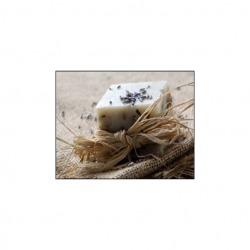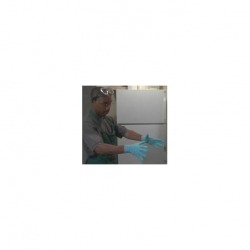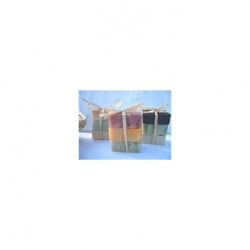How to-Make Soap at Home

You can quickly learn how to make soap at home with the proper instructions! Producing beautiful handcrafted soaps for gift giving or for a new home business can be a rewarding and profitable new craft for you!
There are several methods of making soap, cold process, hot process and melt and pour method. Before starting on the adventure of soap making make sure you fully understand the process and ingredients you are working with and always follow all safety instructions!
Making Soap at Home- The Process
Cold process soap making is the most commonly used method for those making spa quality soaps at home and for the small business owner. It involves combining fatty acids (oils) and sodium hydroxide (lye) together in proper proportions which then form a chemical reaction called saponifaction. Cold Process can take up to six weeks to complete this includes curing time though actual soap making time is usually a few hours from start to finish with clean up time included.
Hot process soap making uses similar ingredients and methods with the exception that the ingredients are heated together and stirred on a stove top throughout the process. With cold process only the fats or oil of choice are heated. Curing time is also necessary with the hot process method.
The beautiful handcrafted soaps you see in boutiques were probably made using the cold or hot process method. Both are easy to learn with simple instructions and even a novice can produce beautifully hand crafted scented soaps at home.
Melt and pour method is the easiest and safest of the methods for making soap at home. It is a wonderful way to introduce soap making to children. Melt and pour method can be done with adult supervision using the microwave or stove top. There are numerous kits on the market for children as well as buying large blocks of glycerin, scents and other additives in local craft stores.
Hot process soap making uses similar ingredients and methods with the exception that the ingredients are heated together and stirred on a stove top throughout the process. With cold process only the fats or oil of choice are heated. Curing time is also necessary with the hot process method.
The beautiful handcrafted soaps you see in boutiques were probably made using the cold or hot process method. Both are easy to learn with simple instructions and even a novice can produce beautifully hand crafted scented soaps at home.
Melt and pour method is the easiest and safest of the methods for making soap at home. It is a wonderful way to introduce soap making to children. Melt and pour method can be done with adult supervision using the microwave or stove top. There are numerous kits on the market for children as well as buying large blocks of glycerin, scents and other additives in local craft stores.
Making Soap at Home- Safety First!

The cold and hot process method are a more complicated process and becomes difficult if you don't know what you are doing. Add to that the use of lye, a caustic chemical, and you have the potential for a dangerous situation to arise. Goggles and gloves are a must! One rule of thumb to remember when working with lye is - lye is always added to the water, never the other way around. Lye is a caustic substance and safety should always be your first thought especially if you have small children in the house. Lye can cause serious burns and needs quick attention. Crafters and artisans have always worked with caustic substances and with a few safety measures in place soap making at home can be rewarding and safe! Our great grandmothers regularly worked with lye making soaps, they may not have been the high-end soaps we have come to love but good quality long lasting soaps nonetheless. Learn the safety measures from the experts!
Learn Soap Making from the Pro's

The information presented here just touches on the art of making soap at home. There are many other aspects to learn such as 'trace', shortening curing time, why soap can 'seize', working safely with lye, how to work with high end oils and scents, additives, adding botanicals and the list goes on! It is important to learn the proper methods of making soap at home for safety reasons as well as avoiding costly mistakes. Some of the finer points of making soap are best learned by seeing it done and in doing it yourself. If you would like to learn more about making soap at home click on my favorite link and begin your soap making adventure!
Happy soap making and remember safety first
Happy soap making and remember safety first
